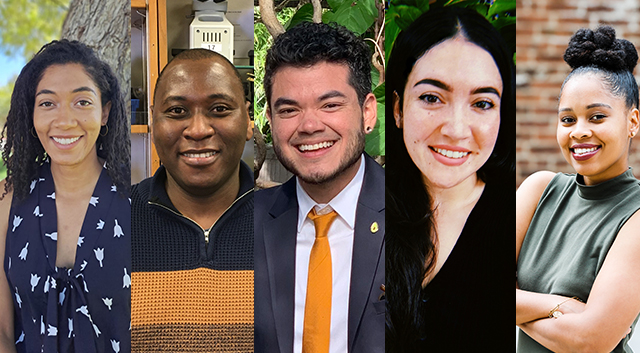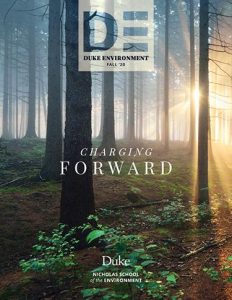A diverse portfolio of marine protected areas can better advance global conservation and equity.
Gill DA, Lester SE, Free CM, Pfaff A, Iversen E, Reich BJ, Yang S, Ahmadia G, Andradi-Brown DA, Darling ES, Edgar GJ, Fox HE, Geldmann J, Trung Le D, Mascia MB, Mesa-Gutiérrez R, Mumby PJ, Veverka L, Warmuth LM., 2024.
Protected areas are set to cover one-third of oceans by 2030 yet rigorous empirical estimates of the relative performance of different marine protected area (MPA) types are few. Using a quasi-experimental design and global dataset, we elucidate the role of context and management when comparing benefits from no-take vs. multiple-use MPAs, providing insights for locations where no-take restrictions may not be ethical or culturally acceptable. While multiple-use performance was on average lower than for no-take MPAs, in high-pressure areas they produced similar outcomes when adequately staffed and appropriately regulated. We also highlight potential biases in existing estimates of relative benefits from no-take vs. multiple-use MPAs in our study and in previous literature, and show how counterfactual-based approaches can address them.
Triple exposure: Reducing negative impacts of climate change, blue growth, and conservation on coastal communities.
Gill, D.A., Blythe, J., Bennett, N., Evans, L., Brown, K., Turner, R.A., Baggio, J.A., Baker, D., Ban, N.C., Brun, V., Claudet, J., Darling, E., Franco, A.D., Epstein, G., Gray, N.J., Gurney, G.G., Horan, R.P., 2023.
Coastal communities are on the frontlines of three accelerating global change drivers, climate change, blue growth, and the expansion of area-based conservation, leading to a “triple exposure” scenario. Despite efforts to maximize social benefits from climate, development, and conservation, externally driven processes can converge to amplify vulnerabilities and inequalities. Pre-existing social injustices increase the sensitivity of affected individuals to change and limit their capacity to adapt or benefit from the interacting impacts of triple exposure. We argue that external implementors cannot effectively and equitably achieve climate, economic, and conservation goals without prioritizing social justice and building general resilience.
Blue justice: a review of emerging scholarship and resistance movements.
Blythe J.L., Gill D.A., Claudet J., Bennett N.J., Gurney G.G., Baggio J.A., et al. 2023.
The term “blue justice” was coined in 2018 during the 3rd World Small-Scale Fisheries Congress. Since then, academic engagement with the concept has grown rapidly. This article reviews 5 years of blue justice scholarship and synthesizes some of the key perspectives, developments, and gaps. We then connect this literature to wider relevant debates by reviewing two key areas of research – first on blue injustices and second on grassroots resistance to these injustices.
Diversity in Marine Protected Area regulations: partial protection approaches for locally appropriate marine management.
Andradi-Brown, D.A., Veverka, L., Amkieltiela, A., Crane, N.L., Estradivari, E., Fox, H., Gill, D., Goetze, J., Gough, C., Krueck, N., et al. 2023.
Globally, marine protected area (MPA) objectives have increasingly shifted from a primary focus on maintaining ecosystems through prohibiting extractive activities, to more equitable approaches that address the needs of both people and nature. This has led to MPAs with a diverse array of fisheries restrictions and recent debate on the type of restrictions that contribute to achieving biodiversity goals. We find that partially protected MPAs can offer effective and equitable pathways for biodiversity conservation if tailored to local context. Rather than focusing primarily on fully protected areas for achieving new global MPA targets, we recommend countries use a blend of locally-appropriate protection levels – from fully protected areas to partially protected MPAs to achieve positive biodiversity outcomes.
The MPA Guide: A framework to achieve global goals for the ocean
Grorud-Colvert, K., Sullivan-Stack, J., Roberts, C., Constant, V., Horta e Costa, B., Pike, E. P., Kingston, N., Laffoley, D., Sala, E., Claudet, J., Friedlander, A. M., Gill, D. A., Lester, S. E., Day, J. C., Gonçalves, E. J., Ahmadia, G. N., Rand, M., Villagomez, A., Ban, N. C., … Lubchenco, J.
Marine Protected Areas (MPAs) are conservation tools intended to protect biodiversity, promote healthy and resilient marine ecosystems, and provide societal benefits. Despite codification of MPAs in international agreements, MPA effectiveness is currently undermined by confusion about the many MPA types and consequent wildly differing outcomes. We present a clarifying science-driven framework—The MPA Guide—to aid design and evaluation. The guide categorizes MPAs by stage of establishment and level of protection, specifies the resulting direct and indirect outcomes for biodiversity and human well-being, and describes the key conditions necessary for positive outcomes. Use of this MPA Guide by scientists, managers, policy-makers, and communities can improve effective design, implementation, assessment, and tracking of existing and future MPAs to achieve conservation goals by using scientifically grounded practices.
Biodiversity needs every tool in the box: Use OECMs
Gurney, G. G., Darling, E. S., Ahmadia, G. N., Agostini, V. N., Ban, N. C., Blythe, J., Claudet, J., Epstein, G., Estradivari, Himes-Cornell, A., Jonas, H. D., Armitage, D., Campbell, S. J., Cox, C., Friedman, W. R., Gill, D., Lestari, P., Mangubhai, S., McLeod, E., … Jupiter, S. D.
To conserve global biodiversity, countries must forge equitable alliances that support sustainability in traditional pastoral lands, fisheries-management areas, Indigenous territories and more.
The COVID-19 Pandemic, Small-Scale Fisheries and Coastal Fishing Communities
Bennett, N. J., E. M. Finkbeiner, N. C. Ban, D. Belhabib, S. D. Jupiter, J. N. Kittinger, S. Mangubhai, J. Scholtens, D. Gill, and P. Christie.
The COVID-19 pandemic has rapidly spread around the world with extensive social and economic effects. This editorial focuses specifically on the implications of the pandemic for small-scale fishers, including marketing and processing aspects of the sector, and coastal fishing communities, drawing from news and reports from around the world. Negative consequences to date have included complete shut-downs of some fisheries, knock-on economic effects from market disruptions, increased health risks for fishers, processors and communities, additional implications for marginalized groups, exacerbated vulnerabilities to other social and environmental stressors, and increased Illegal, Unreported and Unregulated fishing. Though much of the news is dire, there have been some positive outcomes such as food sharing, the revival of local food networks, increases in local sales through direct marketing and deliveries, collective actions to safeguard rights, collaborations between communities and governments, and reduced fishing pressure in some places. While the crisis is still unfolding, there is an urgent need to coordinate, plan and implement effective short- and long-term responses. Thus, we urge governments, development organizations, NGOs, donors, the private sector, and researchers to rapidly mobilize in support of small-scale fishers, coastal fishing communities, and associated civil society organizations, and suggest actions that can be taken by each to help these groups respond to the COVID-19 pandemic.
Strengthen causal models for better conservation outcomes for human well-being.
Cheng, SH; McKinnon, MC; Masuda, YJ; Garside, R; Jones, KW; Miller, DC; Pullin, AS; Sutherland, WJ; Augustin, C; Gill, DA; Wongbusarakum, S; Wilkie, D
Understanding how the conservation of nature can lead to improvement in human conditions is a research area with significant growth and attention. Progress towards effective conservation requires understanding mechanisms for achieving impact within complex social-ecological systems. Causal models are useful tools for defining plausible pathways from conservation actions to impacts on nature and people. Evaluating the potential of different strategies for delivering co-benefits for nature and people will require the use and testing of clear causal models that explicitly define the logic and assumptions behind cause and effect relationships.
Social Synergies, Tradeoffs, and Equity in Marine Conservation Impacts
Gill, DA; Cheng, SH; Glew, L; Aigner, E; Bennett, NJ; Mascia, MB
Biodiversity conservation interventions often aim to benefit both nature and people; however, the social impacts of these interventions remain poorly understood. We reviewed recent literature on the social impacts of four marine conservation interventions to understand the synergies, tradeoffs, and equity (STE) of these impacts, focusing on the direction, magnitude, and distribution of impacts across domains of human wellbeing and across spatial, temporal, and social scales. STE literature has increased dramatically since 2000, particularly for marine protected areas (MPAs), but remains limited. Few studies use rigorous counterfactual study designs, and significant research gaps remain regarding specific wellbeing domains (culture, education), social groups (gender, age, ethnic groups), and impacts over time. Practitioners and researchers should recognize the role of shifting property rights, power asymmetries, individual capabilities, and resource dependency in shaping STE in conservation outcomes, and utilize multi-consequential frameworks to support the wellbeing of vulnerable and marginalized groups.
Read About More Publications Here







 Supporting Climate Justice through Equitable Conservation: Blue Justice
Supporting Climate Justice through Equitable Conservation: Blue Justice 





